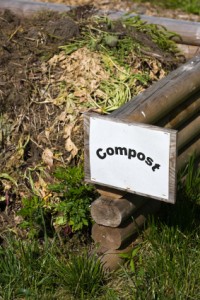In the northern hemisphere, November sprawls across the border of autumn and winter like a damp gray blanket. While the eleventh month brings a few pleasant days to us in North Carolina, it also carries stretches of time burdened by chilly winds and cold rains. It’s enough to make an old fellow want to pull the comforter up to his furry chin and stay in bed to ride out the whole sloppy mess.
Bats, bears, hedgehogs, squirrels, chipmunks, and a host of other critters are either pondering hibernation or are already snug in their burrows “when the skies of November turn gloomy.” Why can’t a sometimes cantankerous survival gardener and random scribbler also grab a few months of shut eye?
Well, for starters, we’ve got a lot to do around this place, and my ladylove isn’t about to tolerate a lay-about when there’s work to be done. Another factor keeping me from hibernating is the fact that I love the energy of cool, crisp days and the way the stars seem more intense on clear winter nights. And, of course, like the late, great Mr. Frost, “I have promises to keep,” and one of those promises involves this column.
 Since we’re talking about hibernation, let’s touch a moment on something in your yard that might look like its hibernating but could actually be quite active. Yes, I’m talking about your compost pile.
Since we’re talking about hibernation, let’s touch a moment on something in your yard that might look like its hibernating but could actually be quite active. Yes, I’m talking about your compost pile.
During the summer and fall, your compost pile feels like a gardening gold mine. Every time you turn it over, you feel like you’re churning a nutrient rich bundle of wonder that will help feed your veggies. Then, before you know it, winter comes stomping in and covers the whole thing with a blanket of snow or sheets of ugly ice. It is easy to believe that the whole composting process has shut down until spring.
Maybe, or maybe not.
The aerobic bacteria that make the whole seemingly magical process of composting happen are a pretty sturdy breed. Although the outside of your pile might seem lifeless, deep within those microbes might still be working. Granted, they’re not as busy as they were on those days when you were hanging out on the beach, but some of them could still be on the job. Today I want to give you a little advice on how to help them out.
The first thing you have to know is that the moisture that is so beneficial to your compost pile in the summer can be a problem in the cooler months. In addition to carbon and nitrogen, your pile needs a good balance of air and water to keep functioning. Too much winter moisture can clog the pore spaces in your compost pile, forcing the air out, and, over time, suffocating the friendly aerobic bacteria that you need to turn brown and green matter into garden gold.
So how do you keep that moisture from shutting down your pile? I suggest building a roof. It doesn’t have to be anything fancy, but any structure that keeps the rain, snow, and ice off your compost pile will work in your favor.
If you’re looking to swing the odds even stronger in your direction, you might want to build a protective structure around your pile. Just like a car in a garage picks up less frost on winter mornings, a compost pile in a humble structure will remain more viable. Keeping your compost covered gives it a fighting chance to continue working as long as it can. If you’re not ready to take on a building project, laying down a tarp is a lot better than nothing. The tarp will shed most of the moisture and help keep the internal heat within the pile, which is exactly where you want it to be.
If you’re feeling ambitious, you might even want to think about digging a hole and burying your pile. Placing your compost pile in a hole at least one foot deep and covering it with a few boards will make those compost creating microbes very happy, and, as we all know, happy microbes are productive microbes.
Depending on where you live, my next two tips might be arriving too late to do you any good this season, but you might want to keep them in mind for when the weather finally gets warmer.
Shredding the material you add to your compost pile will help the whole heap heat more uniformly and will actually insulate it from those extreme temperature shifts that Old Man Winter seems to enjoy so much. The ideal size for particles you add to your pile is less than two inches by two inches. Now, I’m not suggesting you drag a ruler out to the back yard and measure every piece before adding it to the pile, but just remember the general rule that smaller is better. Take a little extra time to rip your browns and greens into littler pieces, and your compost pile will reward you by yielding more of that rich matter your garden loves so much sooner.
My final suggestion concerns volume. To put it simply, the bigger your pile, the longer it will retain heat during the winter months. The fine folks at the University of Illinois Extension have suggested that compost piles in the Midwest should measure about one cubic yard to be most effective in their climate. If you’ve ever spent a winter in the Midwest, you know that those hardy people deal with some bitter cold temperatures during the frozen months. If a one cubic yard heap is effective in the icebox of the United States, just imagine how effective it can be if you live in a milder climate. When adding pieces to your pile, smaller is better, but when building your pile, bigger is better. Don’t get the two confused or you’ll end up with a whole lot of little piles of chunky browns and greens that will take decades to decompose.
Well, that’s about it for me this time around. I’m heading out to my garden and pick some collards to enhance a hardy lunch to chase away the gloom of the day. I hope the composting tips I’ve laid down here help you get through the colder months coming our way and the warmer months that will eventually arrive behind them. Stay active, stay warm, stay healthy, and drop by again soon for more musings, meanderings, and rants from my survival garden.
©2011 Off the Grid News
 Off The Grid News Better Ideas For Off The Grid Living
Off The Grid News Better Ideas For Off The Grid Living



